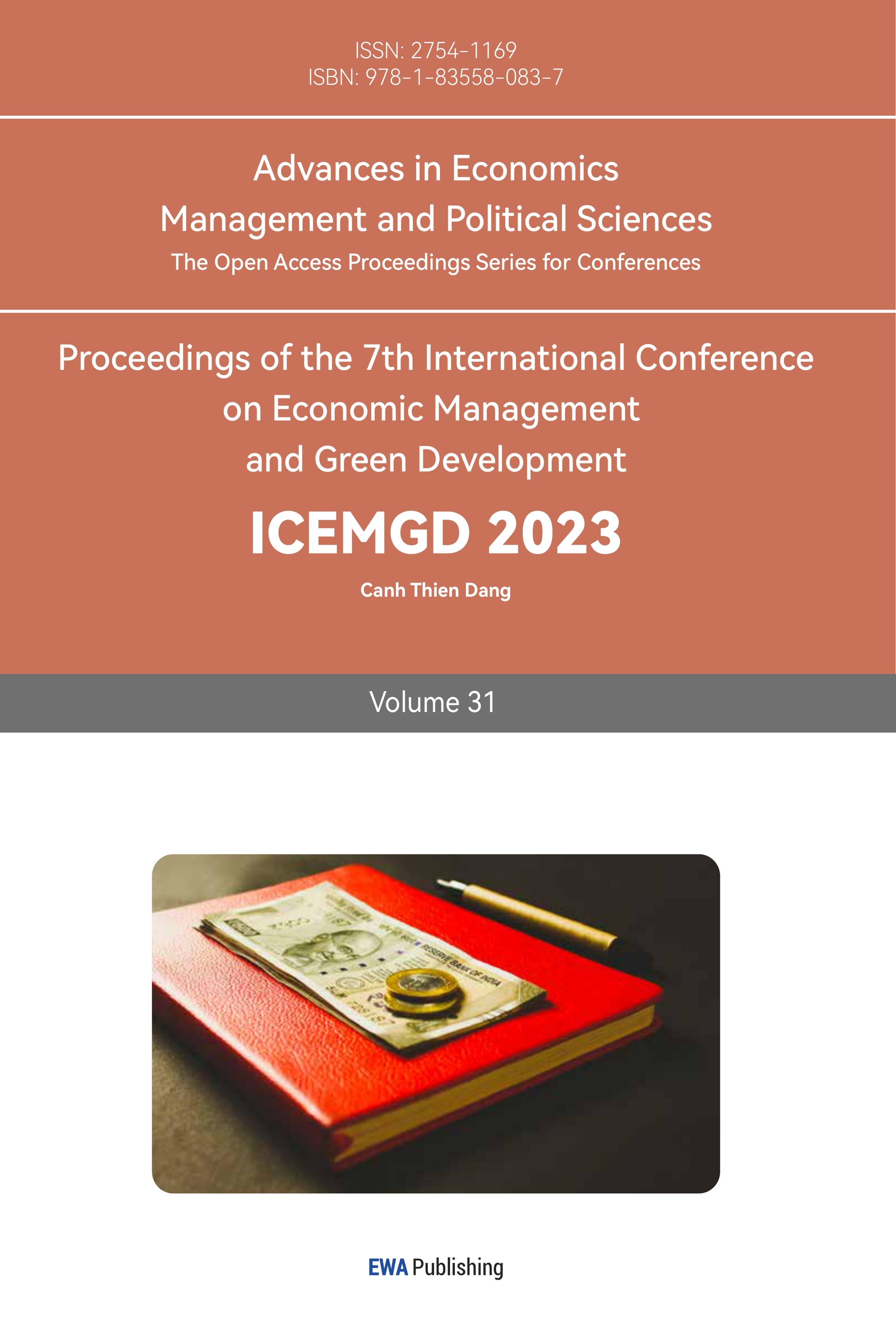References
[1]. Ma, Y.F., Jiang, X., Zhang, C.H.: The success of pure electric vehicles - a case study of Tesla motors in the United States. Chinese and Foreign Entrepreneurs 10, 2 (2013).
[2]. Wang, Y.: Research on fast charging technology for power lead acid batteries used in electric vehicles. Harbin Institute of Technology (2006).
[3]. Cao, Y., Zhang, J.Q.: Research on Tesla Motors' international competitiveness. Marketing 33, 33-34 (2019).
[4]. Xia, B.J., Xie, J.Y., Xie, X.H., Research on the low-temperature charging and discharging performance of lithium-ion batteries. Chemical World 49 (10), 581-583 (2008).
[5]. Harrisv, M.: Vehicle heating and cooling system: U.S patent. (1981).
[6]. Sun, Z.C., Wei, X.Z., Zhu, J.G., et al.: Research progress on low-temperature characteristics and heating methods of lithium-ion batteries for vehicles. Automotive Engineering 41 (5), 12 (2019).
[7]. Ling, T.: Research on sales forecast of electric vehicle market in China. Chongqing University of Technology (2018).
[8]. Pesaran, A., Vlahinos, A., Stuart, T.: Cooling and preheating of batteries in hybrid electric vehicles. In 6th ASME-JSME Thermal Engineering Joint Conference, pp. 1-7. Citeseer. (2003).
[9]. Chen, P., Ji, L., Li, Y., Lu, Z.: Design of the control scheme of power battery low temperature charging heating based on the real vehicle applications. In 2013 IEEE vehicle power and propulsion conference (VPPC), pp. 1-6. IEEE. (2013).
[10]. Ge, S., Ji, Y., Leng, Y., Wang, C. Y., Xu, T., Yang, X. G., Zhang, G.: Lithium-ion battery structure that self-heats at low temperatures. Nature 529(7587), 515-518 (2016).
[11]. Ji, Y., Wang, C. Y.: Heating strategies for Li-ion batteries operated from subzero temperatures. Electrochimica Acta, 107, 664-674 (2013).
[12]. Scafidi, C.J., Vanderslice Jr, W.T.: Battery heating system using internal battery resistance. US Patent 5(362), 942 (1994).
Cite this article
Li,M. (2023). Analyze the Underlying Problems of Tesla Electric Cars and Other Similar Electric Cars. Advances in Economics, Management and Political Sciences,31,199-204.
Data availability
The datasets used and/or analyzed during the current study will be available from the authors upon reasonable request.
Disclaimer/Publisher's Note
The statements, opinions and data contained in all publications are solely those of the individual author(s) and contributor(s) and not of EWA Publishing and/or the editor(s). EWA Publishing and/or the editor(s) disclaim responsibility for any injury to people or property resulting from any ideas, methods, instructions or products referred to in the content.
About volume
Volume title: Proceedings of the 7th International Conference on Economic Management and Green Development
© 2024 by the author(s). Licensee EWA Publishing, Oxford, UK. This article is an open access article distributed under the terms and
conditions of the Creative Commons Attribution (CC BY) license. Authors who
publish this series agree to the following terms:
1. Authors retain copyright and grant the series right of first publication with the work simultaneously licensed under a Creative Commons
Attribution License that allows others to share the work with an acknowledgment of the work's authorship and initial publication in this
series.
2. Authors are able to enter into separate, additional contractual arrangements for the non-exclusive distribution of the series's published
version of the work (e.g., post it to an institutional repository or publish it in a book), with an acknowledgment of its initial
publication in this series.
3. Authors are permitted and encouraged to post their work online (e.g., in institutional repositories or on their website) prior to and
during the submission process, as it can lead to productive exchanges, as well as earlier and greater citation of published work (See
Open access policy for details).
References
[1]. Ma, Y.F., Jiang, X., Zhang, C.H.: The success of pure electric vehicles - a case study of Tesla motors in the United States. Chinese and Foreign Entrepreneurs 10, 2 (2013).
[2]. Wang, Y.: Research on fast charging technology for power lead acid batteries used in electric vehicles. Harbin Institute of Technology (2006).
[3]. Cao, Y., Zhang, J.Q.: Research on Tesla Motors' international competitiveness. Marketing 33, 33-34 (2019).
[4]. Xia, B.J., Xie, J.Y., Xie, X.H., Research on the low-temperature charging and discharging performance of lithium-ion batteries. Chemical World 49 (10), 581-583 (2008).
[5]. Harrisv, M.: Vehicle heating and cooling system: U.S patent. (1981).
[6]. Sun, Z.C., Wei, X.Z., Zhu, J.G., et al.: Research progress on low-temperature characteristics and heating methods of lithium-ion batteries for vehicles. Automotive Engineering 41 (5), 12 (2019).
[7]. Ling, T.: Research on sales forecast of electric vehicle market in China. Chongqing University of Technology (2018).
[8]. Pesaran, A., Vlahinos, A., Stuart, T.: Cooling and preheating of batteries in hybrid electric vehicles. In 6th ASME-JSME Thermal Engineering Joint Conference, pp. 1-7. Citeseer. (2003).
[9]. Chen, P., Ji, L., Li, Y., Lu, Z.: Design of the control scheme of power battery low temperature charging heating based on the real vehicle applications. In 2013 IEEE vehicle power and propulsion conference (VPPC), pp. 1-6. IEEE. (2013).
[10]. Ge, S., Ji, Y., Leng, Y., Wang, C. Y., Xu, T., Yang, X. G., Zhang, G.: Lithium-ion battery structure that self-heats at low temperatures. Nature 529(7587), 515-518 (2016).
[11]. Ji, Y., Wang, C. Y.: Heating strategies for Li-ion batteries operated from subzero temperatures. Electrochimica Acta, 107, 664-674 (2013).
[12]. Scafidi, C.J., Vanderslice Jr, W.T.: Battery heating system using internal battery resistance. US Patent 5(362), 942 (1994).









